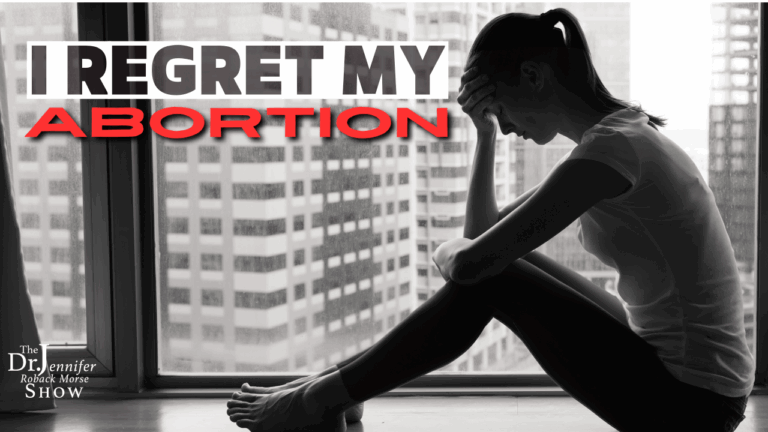by JOAN FRAWLEY DESMOND
This article was first posted at ncregister.com on April 16, 2015.
NEWS ANALYSIS: Churches, scholars and activists weigh in with amicus briefs as the U.S. Supreme Court prepares to hear oral arguments in four key cases.
WASHINGTON — “Given both the unique capacity for reproduction and the unique value of homes with a mother and father, it is reasonable and just for
a state to treat the union of one man and one woman as having a public value that is absent from other intimate, interpersonal relationships,” read
the U.S. Conference of Catholic Bishops’ amicus brief filed with the U.S. Supreme Court ahead of related oral arguments.
“No other institution joins together persons with the natural ability to have children, to assure that any such children are properly cared for by their
own parents.”
On April 28, the justices will hear oral arguments in Obergefell v. Hodges,
along with three other cases that will decide the fate of state laws that define marriage as a union of one man and one woman.
“Does the 14th Amendment require a state to license a marriage between two people of the same sex?”
That is the key question before the justices, who granted review of four cases after the 6th Circuit Court of Appeals found that the state marriage laws did not violate the same-sex couples’ right to due process and equal protection, as guaranteed under the 14th Amendment.
“Does the 14th Amendment require a state to recognize a marriage between two people of the same sex when their marriage was lawfully licensed and performed
out of state?” That is the second question that also will be decided by the high court.
The 6th Circuit has jurisdiction in Ohio, Tennessee, Michigan and Kentucky. But if the justices reject the appellate court’s ruling, the landmark decision
could have ramifications across the country.
Not only could the decision strike down state laws that effectively bar same-sex “marriage,” it could affect family law and anti-discrimination statutes
across the nation.
Depending on the findings of the majority, the decision could also pave the way for a flood of church-state litigation, as the U.S. bishops cautioned.
Thus, this long-anticipated moment has led a range of individuals and groups, from top legal scholars to civil-rights groups and social researchers, to
file a reported 120 amicus briefs with the court.
During the oral arguments, the justices will review constitutional matters like the right of states to set marriage laws. They will also consider whether
a state law defining marriage as a union of one man and one woman should be subject to a higher standard of scrutiny because of its negative impact
on a social group that has long been a target of discrimination.
But the plaintiffs and their allies have also argued that state laws barring same-sex couples from legal marriage express an irrational animus and a deep
bigotry toward same-sex couples.
Thus, amicus briefs submitted by sociologists, churches and adoption agencies offer dueling views of marriage and the well-being of children brought up
in non-traditional households.
Such matters are of special concern to Catholics, who support marriage as a union of one man and one woman and believe that children fare best when their
mother and father take their marriage vows of fidelity and permanence seriously.
Family Stability
In the amicus brief filed on behalf of the U.S. Conference of Catholic Bishops, the focus turned to the natural-law arguments that undergird a state’s
strong interest in defending traditional marriage.
“It bears emphasizing that a government preference for husband-wife unions as the optimal environment in which to raise children is a judgment about marriage
as the only institution that serves to connect children with their father and mother together in a stable home,” read the USCCB brief, which rejected
the charge that such laws were motivated by bigotry.
“It is not a judgment about the dignity or worth of any person, married or not.”
The USCCB asserted that marriage laws, which help secure the bond between the biological parents and their children, not only benefit their offspring but
also the mother, who typically retains custody of the children if the parents do not remain together.
“The physical presence and identity of the mother of a child is assured at birth without the assistance of the law; but the assistance of the law is helpful,
if not indispensable, in assuring the presence and identity of the father.”
Finally, the brief pinpointed an increasingly urgent concern of Church leaders: the likelihood that “marriage equality” will lead to an explosion of endless
church-state litigation, as Catholic schools and services resist demands that they embrace the moral equivalence of same-sex unions with marriages
that unite a husband and wife.
“Because marriage so pervades civil and social life, these conflicts will similarly pervade, extending much farther than other categories of conflict that
might be considered analogous,” the brief predicted.
The Ruth Institute, a California-based research center whose mission includes the promotion of “marriage as a lifelong commitment between one man and one
woman,” made a separate but related point in a brief that cited the rise of litigation related to non-traditional households.
The brief warned that biological mothers and fathers could find their parental rights weakened with the redefinition of marriage. As evidence, it cited
the rise of lawsuits filed by women who had been involved with a same-sex partner and successfully secured visitation rights to that partner’s children,
though they had no biological ties and had not adopted the children.
“States can and should avoid creating the legal chaos that ensues when gender is removed from the marital institution,” argued the Ruth Institute’s brief.
Similar concerns were raised in a brief submitted
by 100 marriage scholars, who warned that marriage equality “necessarily requires replacing the gendered ‘man-woman’ definition with a genderless ‘any
qualified persons’ definition.” And genderless marriage will send the message that biological fathers are optional, and their presence is not required
in the home.
The Welfare of Children
The USCCB and the Ruth Institute base their arguments, at least in part, on two undisputed facts: Every child has one biological mother and one biological
father, and the child is most likely to do well when both parents are in the home.
A decade ago, these facts were deployed to strengthen public resistance to any change in U.S. marriage laws. But today, many social researchers contend
that children flourish in homes headed by same-sex couples, and their findings are noted as a key defense of same-sex couples’ right to legal marriage
and to adoption.
Thus, in an amicus brief filed with the Supreme Court, a group
of adoption agencies and advocates led by the Donaldson Adoption Institute contend that children waiting for foster homes and for adoption will suffer
if the court does not recognize same-sex couples’ constitutional right to legal marriage.
Yet, even as the Donaldson Institute made this assertion, the USCCB brief warned that Catholic adoption and foster-care services might have to close their
doors, as several have already done,
if legal same-sex “marriage” forces Church-affiliated agencies to change their child-placement policies.
Further, an amicus brief filed
by the American College of Pediatricians and sociologists that include Mark Regnerus at the University of Texas, sought to educate the court about
the limitations of some social-research findings that have been cited by marriage-equality
activists to advance their argument that children thrive in households led by same-sex couples.
“All but a handful of the studies cited in support draw on non-random samples,” asserted the brief submitted by the American College of Pediatricians.
“This limitation is repeatedly acknowledged in scientific meetings and journals, but ignored when asserted as settled findings in public or judicial
advocacy.”
In contrast, the brief noted, the “three largest statistically representative datasets used to address the question,” including the ‘National Longitudinal
Survey of Adolescent Health,’ with 20,000 cases — have all found that children with same-sex parents fare substantially worse — most measures
show at least twice the level of distress — than do children with opposite-sex parents.”
In the face of such evidence, the brief concluded, “State laws restricting marriage to opposite-sex partners have a rational basis.”
However, a slew of friend-of-the-court documents also made clear that many scholars and activist groups strongly dispute this assessment and liken the
exclusion of same-sex couples from legal marriage to the segregationist policies of the Jim Crow era. This judgment is so well entrenched in elite
legal circles, that The New York Times recently confirmed “no major law firms” had filed briefs “urging the justices to rule against gay marriage.”
“Leading law firms are willing to represent tobacco companies accused of lying about their deadly products, factories that spew pollution, and corporations
said to be complicit in torture and murder abroad. But standing up for traditional marriage has turned out to be too much for the elite bar,” reported The Times.
That harsh view of the state laws was on display in an amicus brief filed by the Human Rights Campaign, which has spearheaded the push for “marriage equality”
across the nation.
“Today, we can see that discrimination against gay people — whether it takes the form of a statute limiting marriage to straight couples, a state
law refusing to recognize the valid marriages of gay couples from out of state or a state constitutional amendment mandating the exclusion of gay couples
from marriage — ‘once thought [to be] necessary and proper,’ really ‘serve[s] only to oppress,’” stated the Human Rights Campaign, in a passage
from its brief, which cited the court’s landmark ruling in Lawrence v. Texas. That ruling struck down the state’s sodomy laws.
The Human Rights Campaign also noted the relevance of the high court’s 2013 decision in U.S. v. Windsor that overturned part of the federal Defense
of Marriage Act (DOMA). Writing for the majority, Justice Anthony Kennedy dismissed the enactment of DOMA as an expression of U.S. lawmakers’ irrational
“animus” for same-sex couples.
While some legal scholars framed state laws barring same-sex “marriage” as a form of sex discrimination, the NAACP Legal Defense & Education Fund
equated such laws with previous bans on interracial marriage that were overturned by the high court in 1967 in Loving v. Virginia.
“Four decades ago, the ‘tradition’ of banning interracial marriage seemed sacrosanct to the vast majority of Americans,” stated the NAACP legal brief.
“Yet such intolerance is now widely seen for what it truly was: racist, wrong and unconstitutional.”
The Next Step
Will such guidance influence the justices? Hard to tell, as legal scholars have suggested that the Supreme Court would not have agreed to hear the four
cases if there wasn’t already a consensus among the justices about the unconstitutionality of state laws that effectively bar same-sex couples from
legal marriage.
The court is expected to issue its decision by the end of June, and though legal experts have suggested the justices will likely rule in favor of same-sex
“marriage,” it is possible that they could leave that decision to individual states.
Will they reconsider Justice Kennedy’s dismissive view of laws that define marriage as a union of one man and one woman as an expression of raw bigotry?
The April 28 oral arguments will likely provide some tantalizing clues regarding the justices’ thinking.
Joan Frawley Desmond is the Register’s senior editor.



